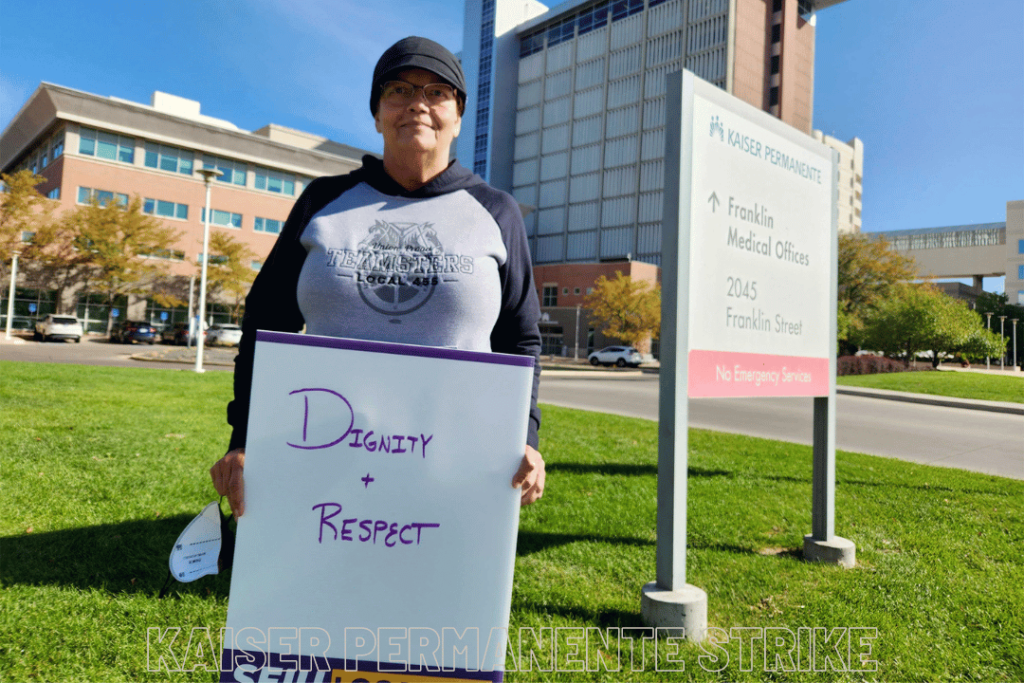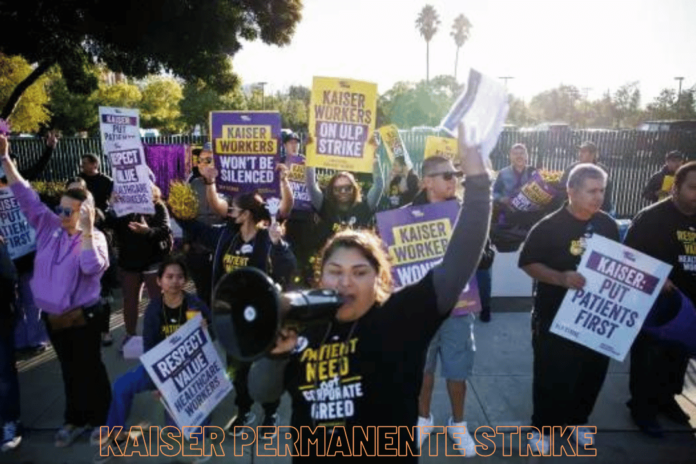In a historic move, more than 75,000 healthcare employees at Kaiser Permanente launched a three-day strike on Wednesday, potentially causing disruptions in medical services such as appointments, lab results, and medication dispensing, with a considerable impact anticipated in California.
Impact of Kaiser Permanente Strike:
The striking workforce encompasses a varied variety of employees, including support staff, X-ray technicians, receptionists, medical assistants, sanitation workers responsible for room cleanliness, and pharmacy workers selling drugs. These vital healthcare personnel serve pivotal roles in surgeries, the operation of imaging equipment, and assistance in several Kaiser Permanente hospitals and outpatient clinics.
Notably, doctors and many nurses were not part of the strike action. However, Kaiser officials noted that non-urgent procedures like colonoscopies and mammograms would suffer postponement, clinic hours could be shortened, and patient assistance phone lines might have increased wait times.
Several establishments, particularly laboratories in locations such as Anaheim, San Diego, and various sections of California, were reported as shuttered, while others functioned with limited hours. Despite initial concerns, no serious interruptions in healthcare services were reported during the early hours of the strike, with Kaiser stating that hospitals, emergency departments, and hospital-based pharmacies would stay functioning.
For Kaiser Permanente, a healthcare organization serving 13 million persons across eight states, this extensive labor strike marks a dramatic break from the reasonably peaceful relationship it has always maintained with its staff. Union officials have called this walkout as probably the largest by healthcare employees in recent U.S. history, signifying a fundamental shift in the dynamics between the healthcare giant and its staff.

Many persons, patients and members linked with Kaiser claimed, they had not before witnessed like this in their life. But it is a truth that patients are locked in this strike, they are waiting for treatment in serious condition. Unions should take decisive measures to rectify this issue as soon as possible. Kaiser Permanente, must also take care of his reputation and dignity in his sector.
Negotiations between the striking workers and Kaiser Permanente continued on Wednesday, although no indications of major progress emerged. Julie Su, the acting secretary of labor under the Biden administration, came to San Francisco and spoke with representatives from both sides of the negotiating process at the venue where negotiations were ongoing. A Department of Labor spokesman acknowledged her involvement, highlighting the urgency of the situation.
This walkout is only one example of the rising discontent among healthcare workers countrywide, a mood that has been amplified by the pandemic’s impact on the healthcare system. Staffing shortages among nurses and burnout among healthcare staff have come to the forefront.
This led to a nurses’ strike in New York City in January, and similar strikes have happened in California, Illinois, Michigan, and other states throughout the year, all spurred by worries over patient overload and understaffing.
Broadly speaking, the current tight job market has empowered unionized workers in numerous industries, culminating in a show of strength. Notably, a walkout at United Parcel Service was recently averted, while autoworkers began picket lines. The rise of labor unions and their power to influence workplace conditions and negotiations is a prominent trend in today’s labor scene.
As the Kaiser Permanente strike proceeds, the healthcare business is anxiously watching the conclusion, which could establish a precedent for future labor actions in the sector. Patients, healthcare workers, and the community at large are prepared for potential interruptions while hoping for a resolution that satisfies the pressing concerns of the striking employees and ensures the continuous delivery of high-quality healthcare services.
In this shifting picture of labor relations, the coming days will reveal the depth of the damage and the opportunity for a resolution that fulfills the demands of all stakeholders engaged.



